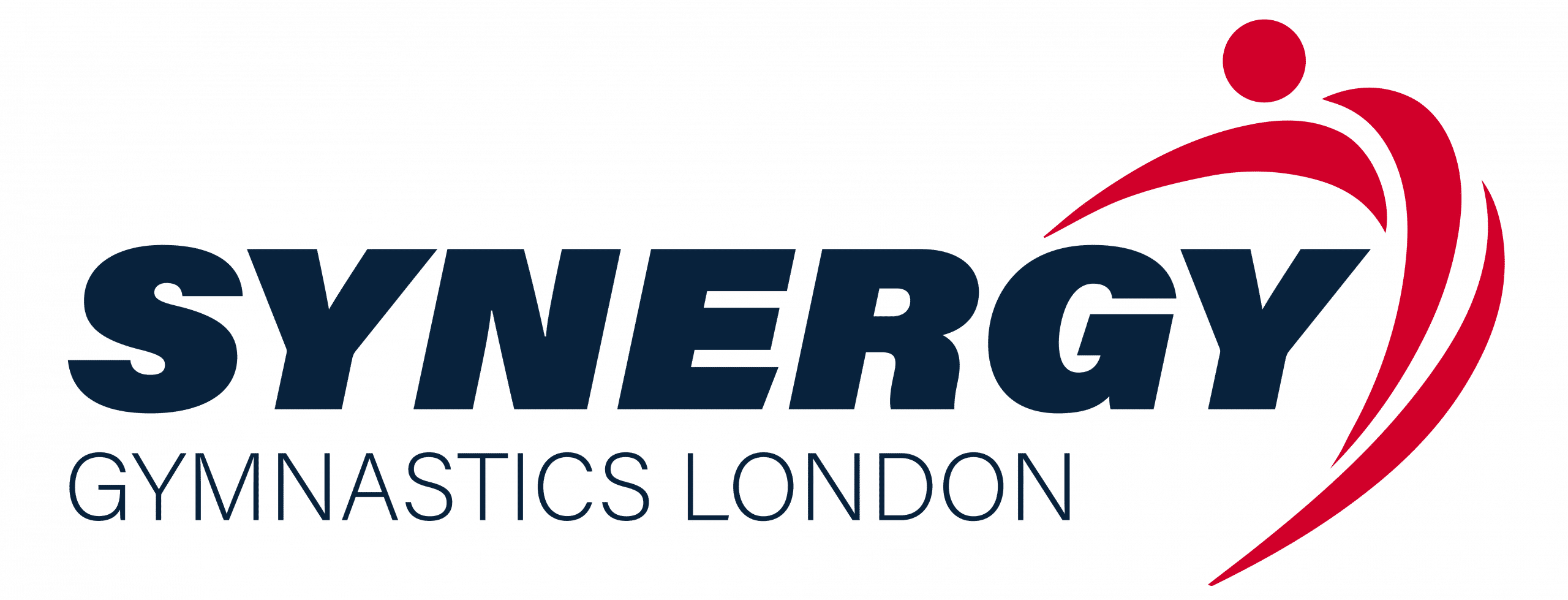As a gymnastics coach with years of experience, I have seen the sport evolve in many ways. Gymnastics has come a long way since its inception, and it continues to change as we move toward the future. In this article, we will explore some of the trends, innovations, and predictions for the future of gymnastics.
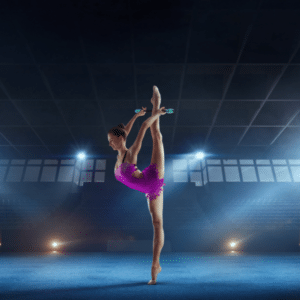
Future Trends in Gymnastics
Gymnastics in the future is set to be different from what it is today. The sport is constantly evolving, and new trends are emerging all the time.
Culture Change in Gymnastics
One of the most significant trends we are seeing in modern gymnastics is a cultural shift toward putting the gymnast’s needs first. This shift is a response to the high-profile abuse claims that have been reported in recent years. Coaches and gym owners must prioritize the physical and emotional well-being of their athletes to create a positive and safe environment.
Following the Science
Another trend we are seeing in modern gymnastics is the increased reliance on scientific evidence to make coaching decisions. In the past, coaches often made decisions based on intuition and experience. However, as we gain more knowledge about how the human body works, coaches are becoming more data-driven. This shift is helping coaches create more effective training programs and injury prevention strategies.
Innovations in Gymnastics
Technology in gymnastics is revolutionizing the sport, and we are seeing some exciting developments that will change the way we train and compete.
AI and Gymnastics
Fujitsu, a Japanese technology company, has developed an AI-based system for judging gymnastics routines. This system uses 3D sensors and AI algorithms to analyze gymnasts’ movements in real-time. Here’s how it works:
- 3D Sensors: The system employs LiDAR (Light Detection and Ranging) sensors to capture detailed, three-dimensional data of the gymnast’s movements.
- AI Analysis: The collected data is processed by AI algorithms that compare the movements against a database of standard techniques and elements.
- Scoring: The AI can evaluate the execution of routines with high precision, identifying deviations from ideal performances and scoring them accordingly.
Fujitsu’s system has been tested in collaboration with the International Gymnastics Federation (FIG) and has shown promise in providing consistent and objective scores. It has been used in events like the Artistic Gymnastics World Championships.
This type of technology is also being used by Chat GPT which can now analyze videos and provide feedback such as how to fix a broken item.
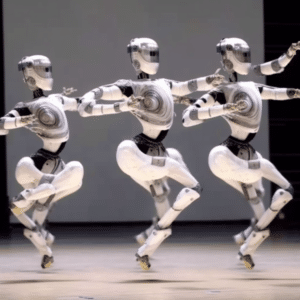
The Perfect Score Project, initiated by the Swiss company Dartfish, utilizes video analysis software to aid in gymnastics judging. This software provides:
- Detailed Video Analysis: Coaches and judges can analyze routines frame by frame to assess the precision of each movement.
- Annotated Feedback: The software allows for detailed annotations and feedback, helping gymnasts understand areas for improvement.
Beyond judging, AI is also being used to support skill development in gymnastics:
- Performance Analysis: AI-powered platforms analyze gymnasts’ performances during training sessions, providing data-driven insights and personalized feedback.
- Injury Prevention: By analyzing movement patterns, AI systems can identify potential risks and suggest adjustments to reduce the likelihood of injuries.
Video analysis has been used by gymnastics coaches for a number of years but the recent developments in AI will probably see coaches utilize video more often and in greater depth.
Virtual Competitions
The impact of COVID-19 led to the possibility of running competitions virtually. This innovation has saved on travel time, and cost while still allowing gymnasts to compete at a high level. This trend has a high chance of continuing, even on a scaled-back level, even now the pandemic has subdued.
There are many potential obstacles to running successful virtual gymnastics competitions including:
- Equality of apparatus
- Quality of the internet connection
- Judges view points
The loss of atmosphere within each of the competition venues would also be a negative to the many thousands of people who enjoy the thrill of watching a competition live. However, the advancements in technology could potentially mean more competitions are held virtually.
Software for Gymnastics Clubs
The use of online software to manage customer databases and classes is becoming increasingly popular in gymnastics clubs. This software allows coaches and gym owners to track athlete progress, create training programs, and manage billing more efficiently. This technology is making it easier for coaches to provide a high level of service to their athletes.
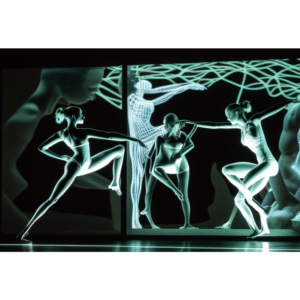
Some of the most popular software for running gymnastics clubs includes:
- I Class Pro
- Jack Rabbit
- Class 4 Kids
- Glofox
Predictions for the Future of Gymnastics
The future of gymnastics looks bright, and we can expect to see some significant changes in the years to come.
Gymnasts Benefit from NILs Earnings
One significant change that is currently affecting the future of gymnastics in the US is the relaxation of NILs (name, image, and likeness) restrictions. This change now allows college athletes to earn money from endorsements, sponsorships, and other commercial opportunities. This shift is expected to have a significant impact on college gymnastics, as athletes can now earn money while still competing at a high level.
Gymnasts who may have previously struggled to cover the costs of their education and training can now benefit from their athletic abilities. This change has the potential to attract more talented gymnasts to college programs and elevate the level of competition in the sport.
I’ve looked in depth at how much money gymnasts can earn and the results are surprising.
New Revenue Streams for Gymnastics Clubs
One prediction for the future of gymnastics is that owners will diversify their offerings to create new sources of income. For example, we may see gyms offering Parkour, aerobics, and ninja classes alongside traditional gymnastics programs.
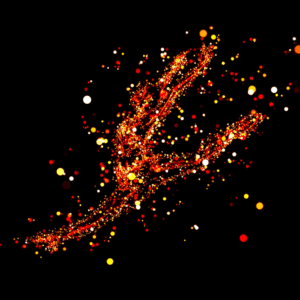
Parkour Becomes an Olympic Sport
Many have asked why only Artistic, Rhythmic and Trampoline gymnastics are included in the Olympic games. Meanwhile, Acrobatics, Tumbling, Team Gym, Aerobics and now Parkour are not included despite also being governed by FIG.
FIG regularly submit proposals to include more gymnastics events to the IOC (International Olympic Committee) and they are always turned down. At least since Trampoline joined the games in Sydney in 2000.
Out of all the disciplines, I predict that Parkour will become an Olympic sport in the near future. This is because it reaches a global audience already, it appeals to the younger generation and the outdoor nature of the sport will not impact the logistics of the existing gymnastics competitions.
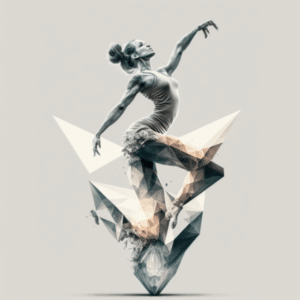
Up and Coming Nations
Finally, we expect to see up-and-coming nations rise in the world of gymnastics. Romania, Italy, and South Korea are just a few of the countries that are producing world-class gymnasts. As the sport continues to grow globally, we can expect to see more countries emerge as gymnastics powerhouses.
Final Thoughts
In conclusion, the future of gymnastics is bright, and we can expect to see some exciting changes in the years to come. As coaches and gymnastics fans, we must embrace these trends and innovations to create a positive and safe environment for our athletes. By prioritizing the needs of our gymnasts, using scientific evidence to inform our decisions, and embracing new technologies, we can help shape the future of this incredible sport.
- How To Get Over a Mental Block In Gymnastics: A Complete Guide
 Gymnastics is a sport that requires not only physical strength and skill but also mental strength. When a gymnast feels like they cannot attempt a… Read more: How To Get Over a Mental Block In Gymnastics: A Complete Guide
Gymnastics is a sport that requires not only physical strength and skill but also mental strength. When a gymnast feels like they cannot attempt a… Read more: How To Get Over a Mental Block In Gymnastics: A Complete Guide - Find The Best Leotard For Girls (Guide)
 Finding an ideal leotard for girls isn’t just about picking a dazzling design that sparkles (although it does help!). The leotard has to fit perfectly,… Read more: Find The Best Leotard For Girls (Guide)
Finding an ideal leotard for girls isn’t just about picking a dazzling design that sparkles (although it does help!). The leotard has to fit perfectly,… Read more: Find The Best Leotard For Girls (Guide) - The Best Gymnastics Shorts (Our Top Picks)
 The best gymnastics shorts are designed to be worn over the top of a leotard providing additional coverage around the upper legs, whilst allowing gymnasts… Read more: The Best Gymnastics Shorts (Our Top Picks)
The best gymnastics shorts are designed to be worn over the top of a leotard providing additional coverage around the upper legs, whilst allowing gymnasts… Read more: The Best Gymnastics Shorts (Our Top Picks) - Decathlon Leotards – Are They Any Good?
 If you’re in the market for a new leotard, you may be wondering if Decathlon leotards are any good considering the low cost of their… Read more: Decathlon Leotards – Are They Any Good?
If you’re in the market for a new leotard, you may be wondering if Decathlon leotards are any good considering the low cost of their… Read more: Decathlon Leotards – Are They Any Good? - A Complete Guide to Gymnastics Hand Rips
 Are you tired of dealing with painful gymnastics rips on your hands from training? Look no further – this article offers a comprehensive approach to… Read more: A Complete Guide to Gymnastics Hand Rips
Are you tired of dealing with painful gymnastics rips on your hands from training? Look no further – this article offers a comprehensive approach to… Read more: A Complete Guide to Gymnastics Hand Rips - Is Gymnastics Dangerous? (Facts and Comparisons)
 Gymnastics is acknowledged as a highly technical and physically demanding sport. It inherently carries a risk of injury, which is why most coaches and clubs… Read more: Is Gymnastics Dangerous? (Facts and Comparisons)
Gymnastics is acknowledged as a highly technical and physically demanding sport. It inherently carries a risk of injury, which is why most coaches and clubs… Read more: Is Gymnastics Dangerous? (Facts and Comparisons)
